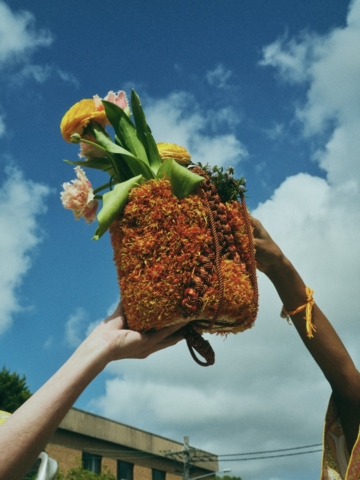Foreign Places, Homeland State of Mind
By Sufana Hammad
Being an artist already comes with its own set of difficulties, but struggling artists living abroad is on another level of complications. Many of the acclaimed and distinguished pieces of art and the artists we recognise today lived their artistic journey far from their homelands. Some of these artists include Van Gogh, Frida Kahlo, and Salvador Dali. What these artists have in common is that some of their work is based on their memory of home, through usage of paintings that combine reality with surrealism, despite them being abroad when these paintings were created.
Beginning with Vincent van Gogh, being an under-appreciated artist during his lifetime, it wasn’t until towards his death that people began recognising and appreciating his work. Van Gogh was from the Netherlands, but during his 37-year lifespan, he moved around Europe frequently. Places such as London, and Paris were part of his artistic journey, where he painted some of his most famous work.
One of Van Gogh’s artworks which was painted in Paris but incorporates elements of his homeland, is “A Pair of Shoes, One Shoe Upside Down” made in 1866. This painting redirects the attention to more dark, traditional colours, very similar to the colours and techniques Van Gogh used in the Netherlands prior moving to Paris. Paris is where Van Gogh adapted a more impressionist approach to paintings, with usage of bright colours, strongly emphasising light through thick application of paint with thin brush strokes and open composition. Despite being away from the Netherlands most of his life, Van Gogh still reflects on the unique painting techniques and abstract painting ideas he used to practice in the Netherlands clearly shown in “A Pair of Shoes, One Shoe Upside Down”, which you can find in his book, Van Gogh- The Complete Paintings.
Frida Kahlo definitely comes into mind when thinking about artists that incorporate themes of death, self-identity and the human body all within the same painting. The hugely-recognised queen of uni-brows, self-portraits and feminism, Kahlo was born in 1907, and alongside her challenges as artists, Kahlo has been through it all.
Diagnosed with polio at the age of six, attends college, gets into a traffic accident that leaves her hospitalised for a month, gets married, two miscarriages, and despite all the challenges and difficulties life threw at her, she has beat all odds and rose like a phoenix from the ashes and became a professor, a part of Mexico’s peace party, won a national prize from the Ministry of Public Education for her picture Moses, and indubitably, the list of her successes goes on.
One of Kahlo’s most recognised pieces is “The Two Fridas” created in 1939. The self-portrait shows the two different sides of Frida, on one side, an independent modern-dressed Frida, and opposing it is Frida in Taehuana costume, a traditional Mexican clothing piece but with a broken heart. “The Two Fridas” was painted in Paris, the same year Kahlo and her husband divorced, but despite being abroad, Kahlo manages to combines not only elements of her Mexican heritage, but also a representation of Frida’s dual heritage, since her father was German and her mother was a mix of Spanish and Native American. Therefore, regardless of interpretation, this painting shows clear symbolism of heritage and tradition, though Kahlo was in Paris at that time.
One cannot write an article about artists that have given tribute to their memories of their homeland through painting ambiguous perceptions, without mentioning Salvador Dali.
The Spanish born and raised artist played a key role in the Surrealist movement during the 20th century. Although many of Dali’s paintings leave people perplexed about the subject matter, “Spain” reflects on a time when Spain was being torn apart by a civil war, in which Dali left the country to Italy with his wife, Gala.
Dali’s inspiration comes from renaissance leaders such as Michelangelo and Leonardo Da Vinci. In “Spain”, there are clear elements symbolising the Spanish Civil War, such as the collection of soldiers scattered across the painting, that forms a face and silhouette of a woman which represent Dali’s mother country, Spain. Another important symbol in “Spain” is the red cloth hanging from the drawer, which represents all the souls lost, bloodshed, violent three-year conflict through the double-imaged work of art.
Whether you’ve fled your country as a result of war, or you’re predominantly paralysed, your heritage follows you everywhere. Your home country shapes how you live out the rest of your life, by taking your past experiences and where you came from, and allowing it to reflect within your art, work, and future life choices. Being tied back to your roots is almost inevitable for most of us, as it were for Van Gogh, Kahlo and Dali. Despite individuality, economy, mobility and all other factors that may stray away from friendly and familiar thoughts of home, the significance of one’s home and memories of their own personal perception of home and experienced cannot be denied nor forgotten.
Speaking of Van Gogh, its widely known that his paintings are still selling for millions and are in some of the most prestigious museums in the world, but aside than his art, a rusted Lefaucheux revolver that is linked to Van Gogh is also set at a very high-price. Today, June 19th, 2019, the Auction Art-Rémy Le Fur auction house will offer the gun Vincent Van Gogh would have used to kill himself with an estimate price of €40,000- 60,000, because nothing says prize possession like purchasing an instrument that contributed to Van Gogh’s suicide.








